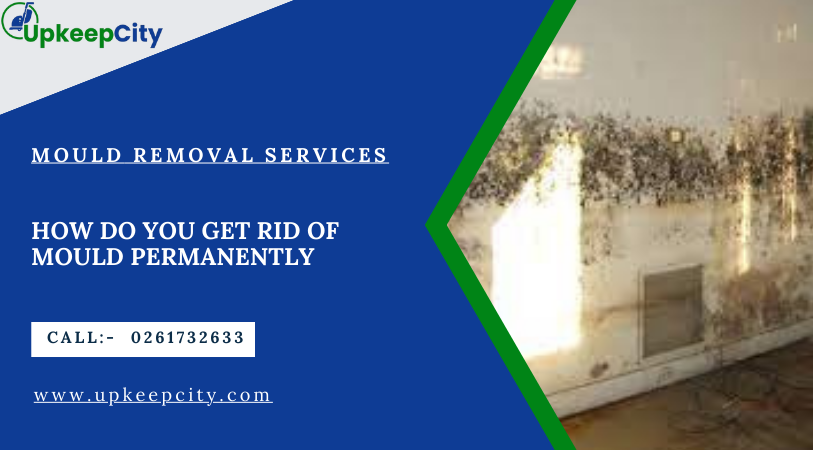How do you get rid of mould permanently?
If your home is suffering from mould as a result of condensation and dampness, it is important to understand that bleach and household products are not effective mould removal treatments. Let’s find out how do you get rid of mould permanently.
What causes mould?
Mould is a microscopic organism that requires the following to grow:
- Any organic material (for example, wood or paper)
- Oxygen
- Moisture
Eventually, mould destroys whatever it grows on because it consumes the material and uses it for nutrients. As it matures, mould releases tiny spores that travel through the air; in some species, these spores have mycotoxins and allergens attached to them. It is the mycotoxins and allergens that can affect our health and cause allergic reactions.
If your home is suffering from black or any other type of mould you want the best mould treatment and a quick and effective solution. You should always seek specialist advice and trust an experienced professional.
Moulds are unsightly and destructive, and if left unattended they cause serious damage to decorations, furnishings and fabrics, as well as compromising air quality. Living in a property where mould is prevalent can be unhealthy, particularly for the vulnerable; young children, the elderly or people with weak or compromised immune systems.
What causes mould? For mould to thrive it requires access to a sustained source of moisture. In a home, this is usually in the form of a damp patch in a wall caused by a leaking pipe or the condensation created by our lifestyles. Cooking, bathing, drying clothes indoors and breathing without adequate ventilation all contribute to excess moisture in the air. Droplets can form on indoor surfaces such as mirrors, windowsills and walls, particularly when they’re cold.
Treating Mould
When you are removing mould it is important to protect yourself from the spores by wearing goggles, long rubber gloves and a mask that covers your nose and mouth. Open the windows but keep doors closed to prevent spores from spreading to other areas of the house.
- have a plastic bag ready to take away any soft furnishings, clothes and soft toys that are mouldy. Soft furnishings should be shampooed and clothes professionally dry-cleaned
- Fill a bucket with water and some mild detergent, such as washing-up liquid or a soap used for hand-washing clothes
- Use a rag dipped in the soapy water to carefully wipe the mould off the wall. Be careful not to brush it, as this can release mould spores
- When you’ve finished, use a dry rag to remove the moisture from the wall
- Afterwards, put the rags in a plastic bag and throw them away
- All the surfaces in the room should be thoroughly cleaned by either wet wiping or vacuuming to remove any spores
Mould Prevention Tips
- Check to see if your windows are allowing rain to seep in and if the sealant around them is damaged.
- Always make sure that you dry wet areas immediately. Wipe up spillages and make sure to dry floors and walls after you take a bath or shower.
- Available from most DIY shops, a moisture meter is the best way to measure humidity in your home. Ideally, humidity should be between 30-60%. Any higher and your risk of condensation and mould increases.
- Leaks are commonly caused by broken gutters or drain pipes. Make sure to inspect the exterior of your house regularly.
- Finally, it is important to let air circulate through your home. Keep internal doors open as much as possible and move the furniture away from walls. Open windows on dry days to let fresh air blow into your home, which will reduce moisture and therefore help to prevent mould.
Getting Rid of Mould
If your home is suffering from mould as a result of condensation dampness, it is important to understand that bleach and household products are not effective mould removal treatments.
Many also look to homemade solutions that are more natural cleaners such as vinegar or bicarbonate of soda. You can read more about these organic cleaners in our article – How To Clean Mould Off Walls?
However again those methods still don’t tackle the cause of the mould and the source of the moisture and therefore are not a long-term solution for getting rid of mould. Mould doesn’t just appear on the surface it goes deep into your internal walls and once you have sprayed or soaked the mould in bleach the mould continues to spread within the brickwork.
Only specialist mould removal products and proper ventilation can completely remove the underlying cause of the problem.
How to remove mould and keep it away permanently
How to remove mould is the most searched query on Google and there are tons of answers to it but the only effective way to permanently get rid of mould problems is by reducing the build-up of moisture in your home. This can only be achieved through better ventilation. A dehumidifier can remove some moisture, but it is not as effective at controlling high levels of water vapour in the air in bathrooms or kitchens and can significantly increase energy bills.
Houses designed with ventilation systems prevent condensation and mould problems. Fresh, filtered and clean air into the property, gently ventilating it, leaving you with a fresh and healthy indoor environment all year round.
Seek an expert solution today and contact Upkeepcity to resolve your mould problems.

Leave a Reply